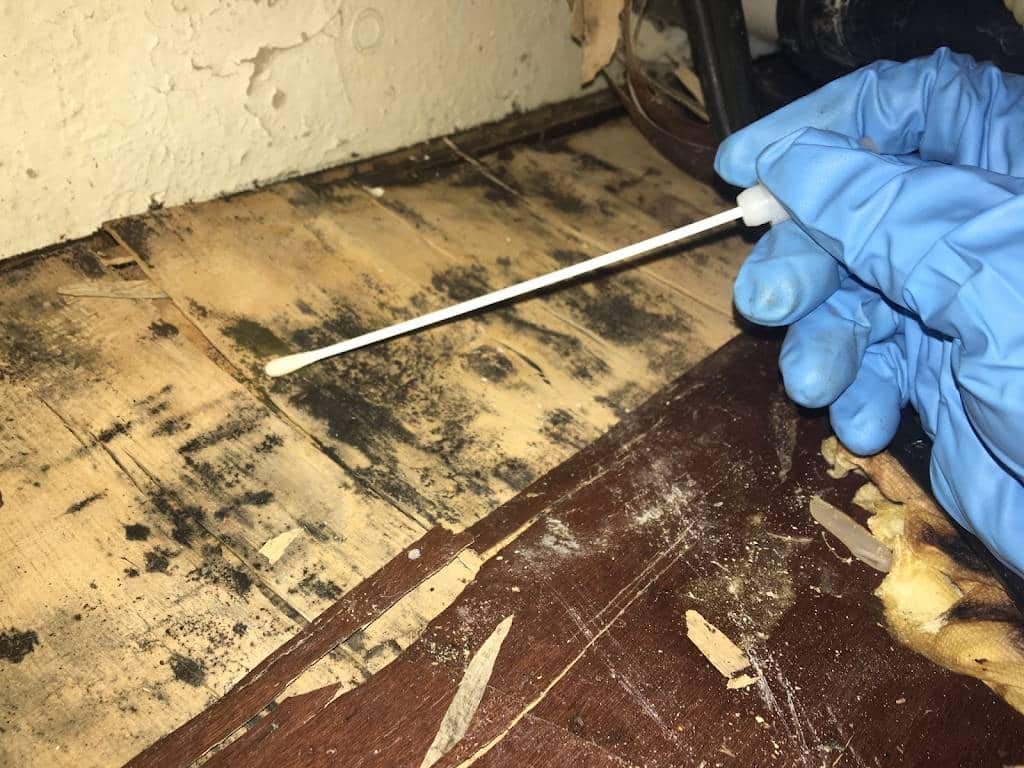Testing Air Quality After Mold Remediation
Effective Message Mold And Mildew Removal Solutions for Your Home
Mold development in homes can be a relentless issue, commonly calling for a systematic method for reliable post-remediation services. From comprehending the aspects that add to mold advancement to executing appropriate cleaning techniques and moisture control steps, the process can be detailed yet critical for keeping a healthy and balanced living atmosphere. Furthermore, discovering all-natural remediation remedies and establishing a routine for recurring maintenance are necessary elements of an extensive mold removal technique. As property owners make every effort to attend to mold problems, discovering the most reliable options becomes paramount for the health of their families.
Recognizing Mold Growth Variables
The main variable adding to mold and mildew growth is wetness. Mold spores need moisture to germinate and thrive, making wet or moist environments highly at risk to mold and mildew invasions.

Additionally, airflow and light direct exposure can impact mold and mildew development. Areas that do not have proper air flow and all-natural light are much more prone to mold and mildew growth. By addressing these factors adequately, people can properly minimize mold and mildew development and secure their living atmospheres.
Appropriate Mold Cleaning Techniques
Using reliable cleansing techniques is crucial in dealing with and stopping the recurrence of mold contamination in interior environments. The initial step in appropriate mold and mildew cleaning is to have the afflicted location to stop the spread of spores to uncontaminated locations.

Carrying Out Moisture Control Steps
To properly avoid mold and mildew growth and contamination in indoor atmospheres, implementing moisture control procedures is extremely important. Wetness is the main factor that fuels mold advancement, making it critical to handle humidity levels within the home. One effective action is to use dehumidifiers to keep indoor moisture levels below 60%. Furthermore, guaranteeing appropriate air flow in locations prone to moisture accumulation, such as restrooms and kitchen areas, can help in reducing the danger of mold and mildew growth. Consistently checking and repairing any leakages in plumbing, roof coverings, or windows is also essential in protecting against excess wetness accumulation. Utilizing exhaust fans while cooking or showering, and enabling air blood circulation by keeping furniture somewhat far from walls can assist in moisture control. Making use of moisture-resistant products in high-humidity locations, such as mold-resistant drywall and paints, can be useful. By carefully carrying out these wetness control procedures, home owners can properly minimize the possibility of mold recontamination and keep a healthy and balanced indoor environment.
Using All-natural Removal Solutions
After effectively implementing dampness control measures to protect against mold development in indoor atmospheres, homeowners can now discover the efficiency of all-natural remediation solutions in keeping a healthy living area. Natural removal services utilize eco-friendly methods to battle mold and mildew and mildew, making them a preferred choice for those seeking safe options. One such service is using vinegar, an all-natural antimicrobial agent, to clean and disinfect surfaces polluted by mold and mildew. Just dilute vinegar with water and spray it onto the impacted locations, allowing it to rest for a couple of hours before wiping clean. In addition, tea tree oil, known for its antifungal residential properties, can be mixed with water and sprayed onto mold-infested surfaces to inhibit further growth. Another natural choice is hydrogen peroxide, which can effectively eliminate mold and mildew on numerous surfaces without leaving unsafe residues behind. By including these all-natural removal solutions into their cleaning routines, homeowners can properly fight mold and mildew growth while advertising a much healthier indoor setting on their own and their family members.

Preserving a Mold-Free Atmosphere
In order to prevent mold and mildew reappearance and guarantee a consistently mold-free atmosphere, it is important for homeowners to carry out proactive maintenance techniques. Regularly evaluating locations prone to mold and mildew growth, such as bathrooms, attic rooms, kitchen areas, and basements, is important. Dealing with any leaks, water damages, or excess wetness without delay can considerably their website decrease the danger of mold advancement. After mold remediation. Correct air flow in locations with high humidity levels is also essential to avoiding mold growth. Utilizing dehumidifiers or exhaust fans can aid keep ideal wetness levels and dissuade mold spores from thriving.
Furthermore, maintaining tidiness in the home is important for mold and mildew avoidance. Frequently cleaning and cleaning surfaces, carpetings, and furniture can help remove mold spores prior to they have an opportunity to multiply and visit this site resolve. Utilizing mold-resistant products for building materials and furnishings can further help in producing a mold-free setting. Maintaining indoor plants in check and making certain appropriate water drainage in outside landscape design can lessen dampness build-up, reducing the chance of mold and mildew infestations. By adhering to these proactive upkeep techniques, house owners can efficiently maintain a mold-free space.
Conclusion
In final thought, it is necessary to deal with mold and mildew growth factors, make use of proper cleansing methods, implement wetness control steps, make use of natural removal options, and maintain a mold-free setting in order to successfully handle message mold removal in your home - Post remediation mold testing near me. By adhering to these techniques, you can protect against mold from persisting and ensure a healthy living setting for you and your household
The primary factor adding to mold development is dampness. Mold and mildew spores call for moisture to grow and sprout, making damp or humid settings very susceptible to mold invasions.To properly protect against mold growth and contamination in indoor atmospheres, applying dampness control measures is critical. Additionally, making sure correct air flow in locations prone to moisture buildup, such as kitchen areas and shower rooms, can aid lower the threat of mold and mildew development.After effectively carrying out dampness control measures to prevent mold growth in indoor atmospheres, home owners blog here can now explore the efficiency of natural remediation options in preserving a healthy living room.